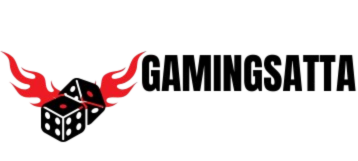The world of trading has shifted from crowded stock exchange floors to sleek, digital platforms accessible on smartphones and desktops. In this fast-moving environment, traders—both seasoned professionals and beginners—demand software that not only executes trades but also engages them at every step. Engagement is crucial because it fosters loyalty, encourages repeat usage, and builds trust in an era where users have countless alternatives at their fingertips.
So, what makes trading software engaging? Let’s explore the essential features modern platforms must include to capture attention, enhance usability, and keep users coming back.
1. Intuitive and User-Friendly Interface
First impressions matter. The layout of trading software should be clean, intuitive, and easy to navigate. A cluttered interface filled with jargon can overwhelm beginners, while a simplistic design without advanced tools can frustrate professionals.
Key elements include:
-
Customizable dashboards so users can arrange charts, watchlists, and news feeds as per their preferences.
-
Light and dark modes to suit different environments and reduce eye strain.
-
Responsive design ensuring seamless usability across devices—desktop, tablet, and mobile.
An engaging interface makes the user feel in control, which is vital in the high-stakes world of trading.
2. Real-Time Market Data and Analytics
Engagement thrives on immediacy. Traders rely on instant access to price movements, charts, and indicators to make decisions. Delays of even a few seconds can result in missed opportunities.
Modern trading software should offer:
-
Live streaming of market data with minimal latency.
-
Advanced charting tools with multiple time frames, drawing features, and overlays like moving averages or RSI.
-
AI-powered analytics that highlight trends, patterns, or unusual trading volumes.
When users can analyze data in real time, they stay immersed in the platform, increasing both engagement and trust.
3. Seamless Trade Execution
No trader wants to navigate a maze of clicks before placing an order. Smooth and quick execution is one of the biggest engagement drivers.
Features to focus on include:
-
One-click trading for quick entries and exits.
-
Order variety (market, limit, stop-loss, trailing stop, etc.) to support diverse strategies.
-
Instant confirmations and transparent updates on order status.
When the execution process is frictionless, traders are more likely to use the platform actively and frequently.
4. Personalization and Custom Alerts
In an age of information overload, users expect platforms to cut through the noise. Personalized experiences foster loyalty and engagement.
Modern trading apps should provide:
-
Custom alerts for price movements, breaking news, or technical indicators.
-
AI-driven suggestions tailored to the user’s trading style and risk appetite.
-
Saved preferences so users can pick up where they left off.
By delivering relevant, timely notifications, software ensures users stay engaged even when they’re away from their screens.
5. Integrated News and Research
Trading decisions are rarely based on numbers alone—news, global events, and expert opinions play an equally crucial role. Instead of forcing users to switch between multiple platforms, trading software should integrate research directly.
Must-have inclusions:
-
Live news feeds from trusted financial sources.
-
In-app research reports on companies, industries, or markets.
-
Sentiment analysis powered by AI, highlighting how events might impact markets.
Engagement grows when users can gather all their trading intelligence in one place without disruption.
6. Social and Community Features
One of the rising trends in trading is social investing—where users learn from, interact with, and even mirror the trades of others. Platforms that integrate social features often report higher engagement and retention.
Features to consider:
-
Discussion forums or chat rooms where traders can share ideas.
-
Copy trading that allows beginners to follow the strategies of successful investors.
-
Leaderboards showcasing top performers, fostering healthy competition.
Community features transform trading from a solitary activity into a collaborative, engaging experience.
7. Gamification Elements
Gamification is no longer confined to fitness apps or language learning—it’s making its way into finance too. The idea is to make the trading journey more interactive and rewarding.
Engaging gamification strategies include:
-
Achievement badges for milestones like first trade, profit targets, or streaks.
-
Progress tracking dashboards to show growth over time.
-
Friendly challenges where users compete in virtual trading contests.
Such features increase stickiness, motivating users to stay active and explore the platform further.
8. Education and Learning Resources
New traders are constantly entering the market, and they need guidance. By offering in-platform education, trading software can boost engagement and help users gain confidence.
Valuable additions are:
-
Interactive tutorials for learning basics of trading and advanced strategies.
-
Simulated demo accounts where beginners can practice without risking real money.
-
Video lessons, webinars, and quizzes to make learning engaging and accessible.
Educational content not only empowers users but also keeps them on the platform longer.
9. Robust Security and Transparency
Engagement is impossible without trust. Trading involves sensitive personal data and significant financial transactions, so robust security is non-negotiable.
Modern platforms should include:
-
Two-factor authentication (2FA) for account safety.
-
End-to-end encryption of data transfers.
-
Transparent fee structures so users aren’t surprised by hidden costs.
By assuring users their funds and data are safe, platforms encourage repeat use and long-term engagement.
10. Multi-Asset Support and Flexibility
Traders today are interested in more than just stocks. Cryptocurrencies, commodities, forex, and ETFs are all part of modern portfolios. Offering access to multiple asset classes keeps users engaged within one ecosystem instead of switching between apps.
Flexibility should extend to:
-
Multiple payment methods for deposits and withdrawals.
-
Cross-border trading capabilities for global investors.
-
Integration with third-party tools like portfolio trackers or tax software.
The more versatile the platform, the greater the engagement potential.
Conclusion
Modern trading software isn’t just about facilitating transactions—it’s about delivering an engaging, personalized, and secure experience that keeps users coming back. By combining intuitive design, real-time data, seamless execution, social features, and robust security, platforms can foster both short-term activity and long-term loyalty.
In an industry defined by speed and trust, engagement is the ultimate differentiator. Trading platforms that prioritize these features will not only attract new users but also build lasting relationships, standing out in an increasingly competitive landscape.


